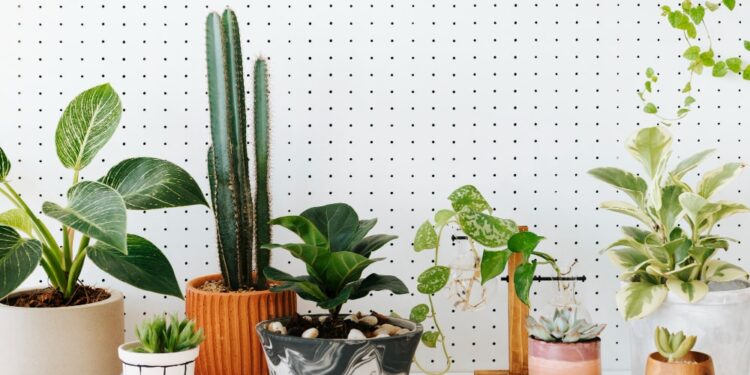Top 6 Essential Medicinal Plants for Home Use

People have been using medicinal plants for centuries for the natural treatment of all kinds of ailments. Today, in an age where modern medicine is easily accessible, medicinal plants are often overlooked or forgotten. However, many of these plants are easily grown at home and can provide a natural remedy for common health issues. Yes, and I am talking about essential medicinal plants that can be grown in your very own backyard. These plants are not only easy to grow, but they also offer a plethora of health benefits. Today, you’ll learn about ten essential home-use medicinal plants and how to grow them.
Benefits of Medicinal Plants
Before we examine specific plants, let’s first understand why using medicinal plants at home can be beneficial. Here are a few key reasons you might want to think about:
- Natural and Chemical-free: Unlike modern medicines, medicinal plants are all-natural and do not contain any harmful chemicals. This makes them a safe and healthy alternative for treating various health issues.
- Cost-effective: Medicinal plants can be easily grown at home, which means you don’t have to spend money on expensive medications. Plus, they are generally low-maintenance, so you save even more in the long run.
- Easy to access: When you grow medicinal plants at home, you can access them instantly. This means you can quickly make a natural remedy whenever you need it without going to the store or waiting for a prescription.
- Environmental benefits: Growing medicinal plants at home reduces your carbon footprint and promotes sustainable living.
You may like: Benefits of Ketamine Therapy in Mental Health
Top 6 Essential Medicinal Plants for Home Use
Now, let’s take a closer look at some of the most essential medicinal plants that can be quickly grown in your backyard. Keep in mind that these plants may have other uses as well, but we will focus on their medicinal properties.
1. Aloe Vera

Aloe vera is a widely loved plant famous for its soothing properties. It contains a gel-like substance that can be applied topically to treat burns, cuts, and skin irritations. You can also ingest the gel to help with digestive issues and boost immunity. Aloe vera is super easy to grow and doesn’t need much care.
How to Grow:
Aloe vera thrives in warm climates and well-drained soil. It does not require much water but needs plenty of sunlight. You can grow it indoors or outdoors in pots or directly in the ground. Just make sure to avoid overwatering and protect it from frost during colder months.
2. Peppermint

Peppermint is a popular herb known for its incredible, refreshing taste and aroma. It contains an essential oil called menthol, which has numerous medicinal properties. Peppermint tea is often used to relieve digestive issues such as bloating, gas, and stomach cramps. It can also help with headaches, muscle pain, and respiratory issues.
Peppermint oil is commonly used in aromatherapy to invigorate the mind and improve focus. It can also provide relief from nausea and motion sickness when applied topically or inhaled.
How to Grow:
Peppermint grows best in moist soil and partial shade. It is a hardy plant that can tolerate various weather conditions, making it easy to grow at home. You can start with seeds or root cuttings and keep the soil consistently moist.
If you live in a colder climate, you can grow peppermint indoors in a pot near a sunny window. Just trim it regularly to keep the plant from becoming too large.
3. Lavender

Lavender is a beautiful flowering plant known for its calming and relaxing properties. Its essential oil is commonly used in aromatherapy to promote relaxation, reduce anxiety, and improve sleep quality. You can also make lavender tea to soothe headaches or use it topically to relieve skin irritations.
Many people also use Lavender as a natural insect repellent and air freshener. Its fragrant flowers make it an excellent addition to any garden or indoor space.
How to Grow:
To thrive, Lavender needs well-drained soil, full sun, and good air circulation. It is best grown from cuttings rather than seeds and requires some pruning to maintain its shape. You can grow it in a pot or directly in the ground, but make sure to provide plenty of space between plants as they can spread out quite a bit.
I remember my mom always kept a pot of Lavender in our living room to promote relaxation and improve the overall ambiance of our home.
Related: How to Grow Plants at Home: Beginners Guide
4. Echinacea

Echinacea, also known as purple coneflower, is a popular herb used to boost the immune system and fight off colds and flu. It is also believed to have anti-inflammatory properties and can help with upper respiratory infections and allergies.
You can consume echinacea as tea or tincture for its medicinal benefits. Its flowers also make a beautiful addition to any garden.
How to Grow:
Echinacea is a hardy plant that can tolerate various weather conditions and soil types. It grows best in full sun or partial shade, and you should avoid overwatering to prevent root rot. You can start with seeds or seedlings and make sure to provide enough space between plants as they can grow up to 4 feet tall.
If you plan to use echinacea for medicinal purposes, it’s best to plant several plants to have enough supply. You’ll also need to harvest the roots, which is best done in the fall.
5. Chamomile

Chamomile is a gentle, soothing herb that has long been used for its calming and sleep-inducing properties. Its flowers contain essential oils and antioxidants that can help with digestive issues, anxiety, and skin irritations.
Chamomile tea is a widely loved natural remedy known to promote relaxation and improve sleep quality. It can also be applied topically to soothe skin irritations such as eczema or sunburn.
I especially love using chamomile tea as a face toner to reduce redness and inflammation.
How to Grow:
Chamomile is a low-maintenance herb that can be easily grown in your backyard. It prefers well-drained soil and partial shade, making it suitable for gardens and indoor pots.
To grow chamomile, collect the seeds from the flowers when they are fully dried. Sow them in early spring and keep the soil moist until they germinate. Once they grow, you can thin out the plants to give them enough space to flourish.
You can also propagate chamomile by dividing an established plant or taking stem cuttings. Just make sure to do this in early spring for best results.
6. Rosemary

Rosemary is a fragrant herb commonly used in cooking but has numerous medicinal properties. Its essential oil is known for improving memory and concentration, reducing stress, and boosting the immune system.
You can also make rosemary tea or use it topically as a natural remedy for headaches and muscle pain. Its antiseptic properties make it helpful in treating minor cuts and wounds.
When I’m feeling stressed or overwhelmed, I love diffusing rosemary essential oil in my home. The aroma is very calming and helps me relax.
Read More: How to Troubleshoot Common Issues in Herb Cultivation
How to Grow:
You can grow rosemary indoors or outdoors, depending on your climate and space availability. It likes well-drained soil and full sun, but it can handle some partial shade too. Rosemary is a slow-growing plant that requires minimal care once established.
You can start with seeds or cuttings and keep the soil consistently moist until the plant takes root. Regular pruning helps maintain the plant’s shape and stimulates new growth. In colder climates, bring the plant indoors during winter or cover it with a blanket to protect it from frost.
Conclusion
Overall, these six herbs are excellent additions to any garden or indoor space. Not only do they add beauty and fragrance, but they also have numerous medicinal benefits that can improve our health and well-being. Whether you choose to grow them for their culinary uses or medicinal properties, these herbs will surely bring joy and healing into your life.
FAQs About Essential Medicinal Plants
What are some great herbs to grow at home?
Some of the best herbs to grow at home include basil, peppermint, Lavender, echinacea, chamomile, and rosemary.
How do I start growing herbs?
You can start growing herbs by choosing a suitable location for them (indoors or outdoors), preparing the soil, and selecting the right plants for your climate.
Can I use these herbs for cooking?
Yes, all six of these herbs are commonly used in cooking to add flavor and aroma to dishes.
Do I need any special equipment or skills to grow herbs?
No, you do not need any special equipment or skills to grow herbs. They are relatively low-maintenance plants that can be grown by anyone with a bit of knowledge and effort.
Are these herbs safe to use for medicinal purposes?
Yes, these herbs have been used for centuries as natural remedies and are generally considered safe when used in moderation. However, it is always best to consult a healthcare professional before using them for medicinal purposes.





